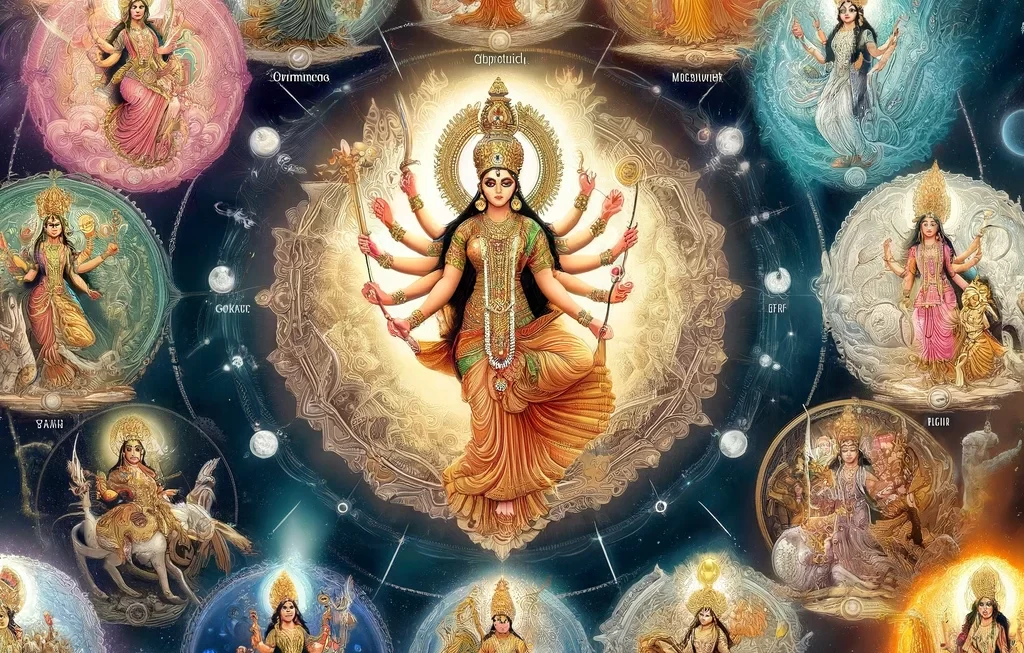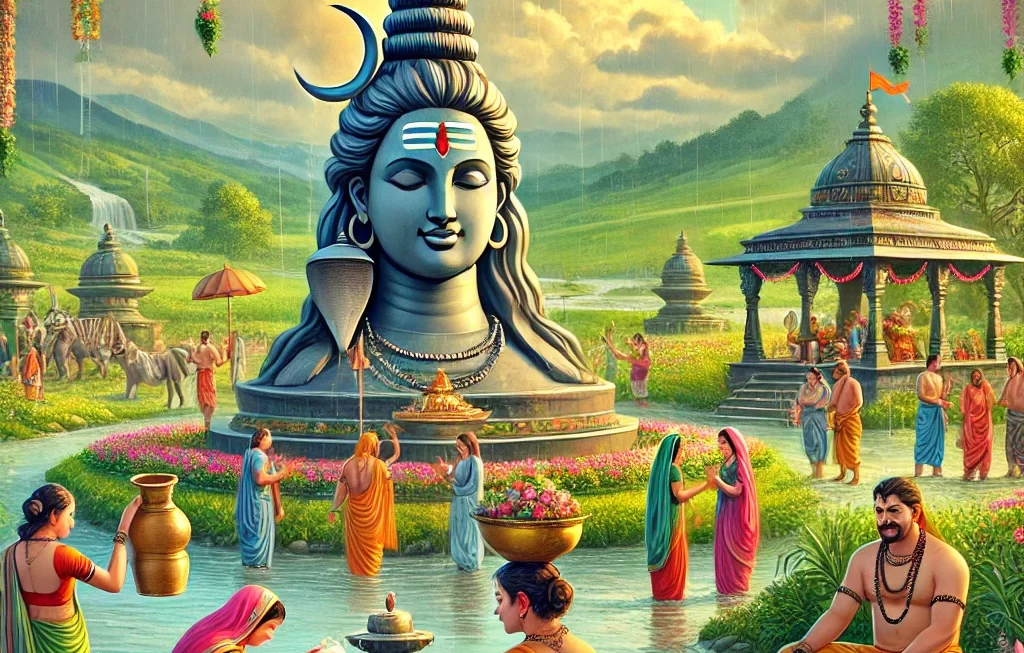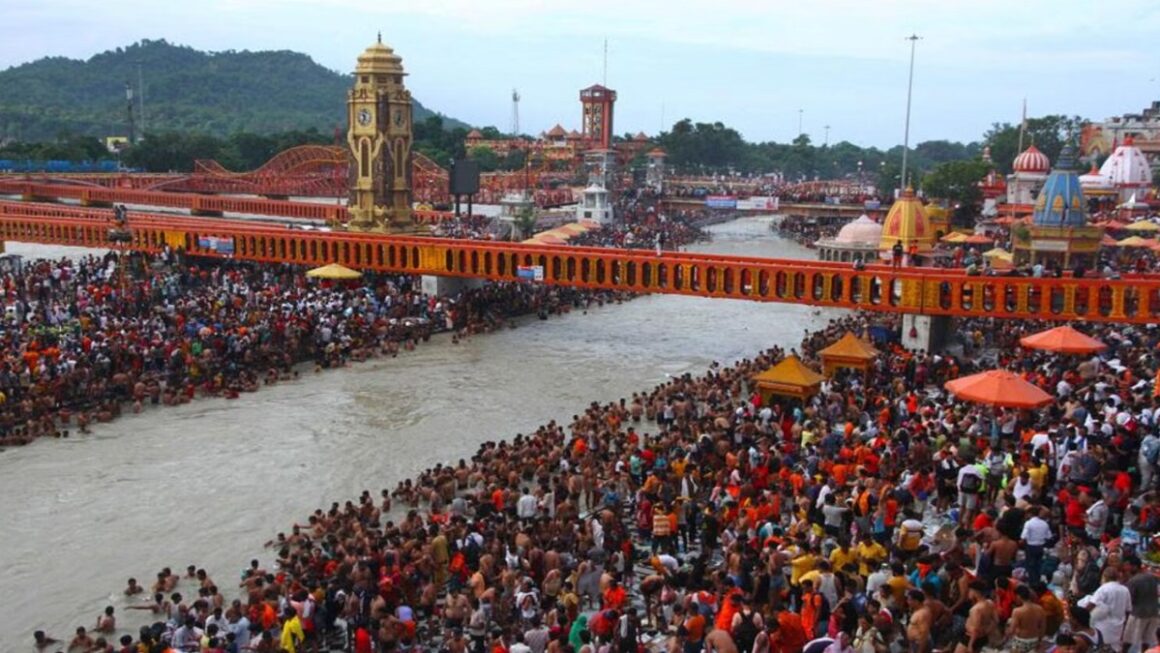In the luminous path of India’s spiritual journey, Chaitra Navratri and the Hindu New Year stand as beacons of divine grace and eternal wisdom, deeply rooted in the sacred Vedas and Puranas. These festivities, transcending mere ritualistic celebrations, invite souls to immerse in devotion, reflecting the profound spiritual ethos that has guided seekers for millennia.
Embracing the Divine Feminine: Navratri’s Spiritual Journey
Navratri, or the “nine nights,” is a divine celebration of the Goddess Durga in her myriad forms. Chaitra Navratri, heralding the season of spring, symbolizes the reawakening of nature and the human spirit. It’s a period marked by deep spiritual significance, where the cosmic play of creation, preservation, and destruction unfolds through the divine form of the Goddess.
The Vedas, ancient scriptures holding the universe’s spiritual knowledge, reverberate with hymns to the Goddess, portraying her as the primal force, the Shakti, that animates all life. She is both the gentle nurturer and the fierce warrior, embodying the balancing force necessary for the maintenance of dharma (cosmic order).
During these nine sacred days, devotees engage in profound worship, fasting, and meditation, seeking to align with the divine feminine energy. Each day is dedicated to a different aspect of the Goddess, inviting reflections on her virtues and teachings, from her nurturing kindness to her unwavering strength in the face of darkness.
Welcoming the New Cycle: The Hindu New Year
The culmination of Chaitra Navratri ushers in the Hindu New Year, celebrated across the diverse tapestry of India with myriad names and customs, yet unified in its essence—a celebration of renewal, hope, and purity. This auspicious day, according to Vedic astrology, marks the moment when the day and night are of equal duration, symbolizing balance and harmony in life’s journey.
The New Year is a time for self-reflection, purification, and setting intentions for the cycle ahead. It’s a reminder of the perpetual cycle of time, the ever-turning wheel of Yugas (ages), where each moment is an opportunity for growth, learning, and closer union with the divine.
In regions like Maharashtra, the hoisting of the Gudi, a symbol of victory and prosperity, and in the South, the preparation of Ugadi Pachadi, a dish with six flavors representing life’s diverse experiences, serve as profound reminders of life’s transient nature and the importance of embracing every aspect with equanimity and grace.
Significance of Chaitra Navratri for Business Owners:
As a member of a Baniya family, I’ve had the unique opportunity to observe and partake in the traditions of Chaitra Navratri from a vantage point that blends both devotion and commerce. The experience of working alongside my father in our shop during this auspicious period has endowed me with valuable lessons and a nuanced perspective on how this festival intertwines with our business practices and cultural ethos. Here, I wish to share some of the key observations and learnings that have shaped my understanding of this occasion:
New Beginnings:
Chaitra Navratri coincides with the start of the Hindu lunar calendar, leading many to consider it the perfect time to initiate new ventures, launch new products, or open new stores. The belief is that starting business activities during this auspicious period will bring luck, success, and divine favor.
The Ritual of “Chopda Pujan”:
A key tradition observed during this time is the “Chopda Pujan” (worship of the business ledger/books). Business owners and shopkeepers conduct special ceremonies to worship Lord Ganesha and Goddess Saraswati, seeking their blessings for wisdom, prosperity, and the removal of obstacles in their business endeavors. This ritual involves the cleaning and worship of the workplace, decorating the account books, and placing them before the deities to mark the beginning of the new financial year.
Invocation of Lord Ganesha and Goddess Saraswati:
Lord Ganesha, the remover of obstacles, and Goddess Saraswati, the deity of knowledge and arts, are venerated to ensure a smooth, profitable, and intellectually rewarding year ahead. Prayers and offerings are made to these deities to symbolize the “giving of a Shri Ganesha” (an auspicious start) to the businesses.
Boost in Consumer Spending:
Chaitra Navratri is also a time when consumer spending sees a significant uptick. Many people wait for this period to make major purchases, investments, or start new financial ventures, believing it to be the most favorable time for such activities. This increase in consumer activity can lead to a boost in sales for businesses, making it a crucial period for promotions, special offers, and launching new products or services.
The Essence of Devotion
At the heart of Chaitra Navratri and the Hindu New Year is the call to delve deeper into one’s spiritual practice, to purify the mind and soul, and to cultivate bhakti (devotion). It is a time to renew one’s commitment to spiritual growth, to seek the divine blessings of knowledge, wisdom, and liberation.
The chanting of mantras, the rhythm of the bhajans (devotional songs), and the silence of meditation become bridges connecting the individual soul to the universal spirit. These practices, endorsed by the Vedas and lived by the sages, become the vessels for receiving the divine grace that flows abundantly during these sacred days.
Conclusion: The Journey Within
Chaitra Navratri and the Hindu New Year invite us on a journey of renewal, a pilgrimage within, to rediscover our divine nature and to realign our lives with the cosmic order. They beckon us to embrace the divine feminine within and around us, to nurture the seeds of devotion, and to step into the New Year with hearts full of hope, love, and unwavering faith in the divine plan.
As we partake in these ancient traditions, let us remember that each moment is an offering, a step on the path to enlightenment. May the divine light guide us, the divine mother protect us, and the New Year bring us closer to realizing our true spiritual essence.




